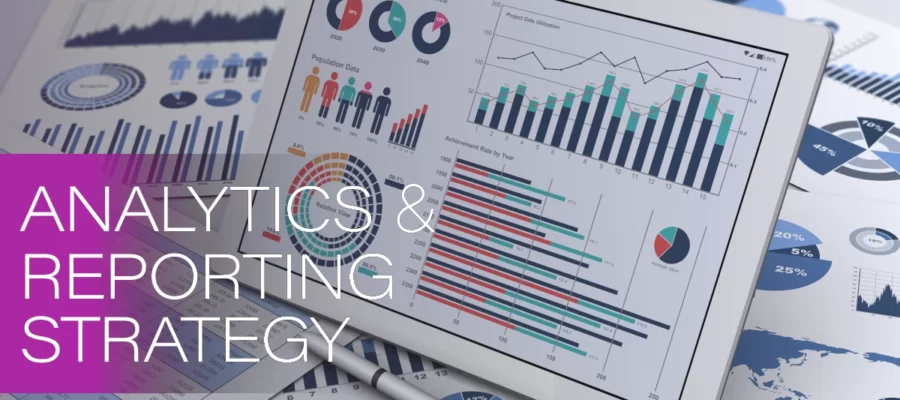Today, we received news that Google Ads is saying bye to a number of its attribution models. Why? Simply put, more advanced technology and abilities are pushing out the old. What we know: First click, linear, time decay, and position-based attribution models are going away. This will leave only two attribution models left to choose between, “Data-driven” and “Last click” models.
Let’s look at a quick recap of what attribution models are and what this change means going forward.
Quick Recap: Attribution Models
As customers move closer to conversion, they will likely come into contact with multiple advertisements from the same advertiser. Attribution models enable you to decide how much credit each ad interaction should get for your conversions.
In the end, these models can provide a deeper insight into the performance of your ads and help you make improvements across conversion journeys. There are three main benefits to using attribution models data:
- Identify the specific touch points that are influencing customers.
- Reach customers earlier in the purchase cycle, and otherwise tailor ad campaigns to goals based on customer data and behavior.
- Distinguish between top-performing and under-performing ads, cut costs, and optimize bidding strategies.
The Models & Differences
Currently, Google Ads has multiple options for attribution models, but remember that most are being sunset.
The Different Models
- Last Click: Conversion credit goes to the last-clicked ad and corresponding keyword.
- First Click: Conversion credit goes to the first-clicked ad and corresponding keyword.
- Linear: Conversion credit is distributed equally across all ad interactions on the path.
- Time Decay: Conversion credit is distributed using a 7-day half-life, where more credit is given to ad interactions that happened closer in time to the conversion.
- Position-Based: Credit distribution: 40% of credit to both the first and last ad interactions and corresponding keywords, with the remaining 20% spread out across the other ad interactions on the path.
- Data Driven: Distributes credit for the conversion based on your past data for this conversion action. It uses your account’s data to calculate the actual contribution of each interaction across the conversion path. Essentially, this model gives the most accurate consumer journey.
Lowdown on the Attribution Models Sunset
Deadline: October 18, 2023
Say Goodbye: First click, linear, time decay, and position-based models are done.
Options Left: “Data-driven” and “Last click” attribution models will stay.
Reasons for Attribution Model Change
Google Analytics 4 saw the introduction of more advanced AI and machine learning as a whole. This increasingly smart technology now gives business owners more accurate information regarding the customer journey. Therefore, as we see more and more people switch to models that give better data it is only natural that the older versions fade out.
According to Google, “rules-based attribution models assign value to each advertising touchpoint based on predefined rules. These models don’t provide the flexibility needed to adapt to evolving consumer journeys”. In fact, only 3% of all Google Ads web conversions are attributed using first click, linear, time decay, or position-based models. Therefore, it is no surprise that Google is pulling the plug on them.
Moving Forward
Just think, if users are interacting with multiple ads and touch points, using rule-based attribution models ignore the other ad interactions customers may have along their journey. More importantly, this means your data isn’t telling you the full story.
Even the “Last click” attribution model ignores any ads that users may have seen before the last ad clicked that led to their conversion. This is why the “Data driven” attribution model is the default. It looks at the whole picture, which is why we recommend it. Not familiar with “Last click” and “Data driven” attribution models? You might want to explore their capabilities and make sure you know which one to use moving forward.
If you are currently running campaigns and using any of the attribution models that are on their last leg, you don’t have to worry about changing them. Google will automatically upgrade them after 10/18/23. See the email below for more details.
Google’s Email Notification
Your conversions use an attribution model that will no longer be supported and will be upgraded on or after 10/18/23
Hello,
We’re contacting you because one or more of your conversion actions are using an attribution model that Google will no longer support. We’ll upgrade these actions to the “Data-driven” model on or after 10/18/23. You can also switch to the “Last click” model, which is still supported.
For each of your Google Ads accounts listed below, review the conversion actions that are currently using an attribution model that will no longer be supported.
Customer ID(s):
XXX-XXX-XXXX
You don’t need to take any further action for any conversion actions you’d like us to upgrade to the “data-driven” model; we’ll make the switch for you on or after 10/18/23. Note that you can always follow these instructions to update an existing conversion action’s attribution model.
For any conversion actions that you’d like us not to upgrade to data-driven attribution, you can choose to switch them to last click attribution here. Please note that there is no option to remain on linear, first touch, time decay, or position-based models.
The Google Ads Team
Google Analytics 4 & Google Ads Connection
Are you ready for this change? Google Analytics 4 has been out for a while now so you should already be set up in GA4 if you care about data. Hint: You should care. Then, you want to make sure that you have your Google Ads properly linked to your GA4 account. Doing this will ensure that you can track the full customer cycle, from how users interact with your marketing to how they complete the conversions you’ve set for them.
Not sure if you’ve done this correctly? Reach out to Cyberlicious® to get expert GA4 migration and configuration services. If you don’t quite need that much help, we can also focus and build out successful advertising strategies and campaigns. Just ask.

